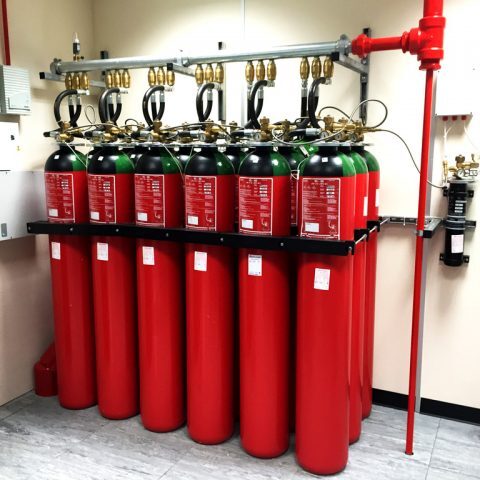Fire safety logbook
Published 17th October 2022
What is a Fire safety logbook? What should it record? A Fire safety logbook put simply is a record/ log of anything and everything that…
Read moreFire can destroy a business, from extensive damage physically to a site, person, or a visitor, it can cause serious harm. It can also damage stock and equipment. Fire spread quickly and can get out of control within minutes. Fire Safety legislation is designed to help you keep people and your premises safe through a variety of safety systems.
One of the ways protection is offered is through fire suppression systems. We have outlined some of the key features of fire suppression systems.
Fire Suppression systems are designed to stop the spread of fire throughout the building, they can also extinguish it completely. There are different types of suppression systems that use different methods available.
Most suppression systems use a mixture of dry chemicals and wet agents. These neutralise fires before they get out of control. They do this by removing the elements needed for a fire to burn. Namely; Fuel, Oxygen, Heat and Combustion Chain Reaction.
Known as a “fire tetrahedron” removing one or more of the components or changing their balance means the fire cannot thrive. This is the aim of suppression system. It either removes heat from the fire, dilutes or removes the oxygen, contains, or eliminates the fuel source or disrupts the combustion chain reaction.
The two most common fire suppression systems are gas or electric.
An electrical fire suppression system is used in areas where a fire could break out, this includes electrical cupboards and stores or rooms with a large amount of technology. Electrical fires are treated differently because they have an external source of energy. Electrical fires are he most common fires in the workplace. Generally caused by faulty electrics.
A suppression system designed for electrics uses linear detection tubing, this detects and suppresses fire and is installed through cableways and enclosures. If a high temperature is detected, the tube bursts, releasing the extinguishing agent directly onto the fire. As the extinguishant is released at the point of the fire it is a highly effective method of putting the fire out early.

Suppression systems are also connected to the fire alarm system, so should the suppression system activate it will sound the fire alarm.
A gas fire suppression system works in a similar way but reduces oxygen levels, reduces chemical reactions within the air and cools with the fire until it dissipates.
Oxygen levels are reduced through the introduction of gases such as argon and nitrogen, fire needs the oxygen level to be above 15% to continue burning. These gases reduce the oxygen level; hence the fire is extinguished.
The chemical reaction from a gas suppression system removes the heat element. Gas released from the system, it mixes with the air and has a greater capacity than air alone, therefore the gas mixture absorbs heat from the fire and will eventually extinguish it.
What are the benefits of a fire suppression system?
If you would like to book a free site survey to review your Fire Suppression System or for any of your fire safety needs please get in touch
Published 17th October 2022
What is a Fire safety logbook? What should it record? A Fire safety logbook put simply is a record/ log of anything and everything that…
Read morePublished 2nd September 2022
Have you ever considered buying Fire Extinguishers online? The internet’s popularity for buying products, has grown vastly over the years. We can now purchase anything…
Read more